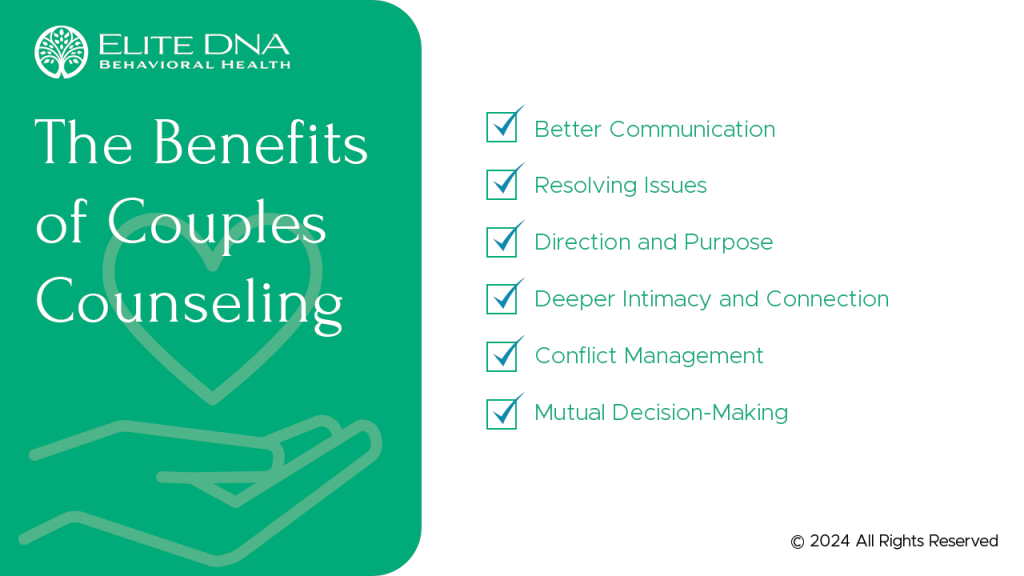What Does Aim Point Counseling Mean?
Facts About Aim Point Counseling Uncovered
Table of ContentsThe Ultimate Guide To Aim Point CounselingRumored Buzz on Aim Point CounselingGetting The Aim Point Counseling To WorkGet This Report about Aim Point CounselingAim Point Counseling Can Be Fun For EveryoneUnknown Facts About Aim Point Counseling
The longitudinal style includes a pre-treatment survey and 2 follow-up studies at 3- and 12-months post-intervention. The research study is set in eight Relationships Australia Victoria centres, throughout city, outer suburban areas, and regional/rural sites. Relationships Australia, a non-government organisation, is the biggest copyright of pair counselling and relationship services in Australia.
These high rates of relationship break down have actually been constantly connected with adverse wellness consequences for both adults and kids adhering to divorce/separation.
5 Simple Techniques For Aim Point Counseling
Longitudinal researches additionally suggest that youngsters of separation have a greater incidence of mental disorders, alcohol and drug use, and dangerous sexual behavior [7] Although the effects of separation and splitting up can be detrimental, study indicates that high partnership disharmony in intact pairs is also most likely to have negative results.
Variables that affect the outcomes of these services need complete examination. Research study to date has actually recognized both couple and private variables that might add to partnership discord. These include partnership satisfaction and dedication at the couple level, and anxiety at the individual degree. Robust research to review relationship-enhancing treatments in the community are limited.
What Does Aim Point Counseling Mean?
While the majority of researches suggest renovations in partnership contentment following couple counselling, they are restricted by the samples and measures used, greatly temporary follow-up time frames, and evaluations that do not account for the dyadic nature of pair data., is an additional typically investigated connection outcome.
To sum up, research study indicates that couple-specific variables as well as private variables might predict the end results of couple coaching and connection services. The causal instructions of these relationships, nonetheless, is less clear. These observations are essential, considering that, to validate and guide the application of partnership services such as couple therapy, empirical evidence should discover both the outcomes of partnership services and the factors that predict effective treatment.
, at the very least in some European nations.

We currently recognize little about the profiles of pairs who seek relationship education and learning compared with those who look for connection coaching, or the results of these programs. Nonetheless, anecdotal proof recommends that there might be significant distress amongst at the very least some couples looking for relationship education. Partnership education programs differ from pair coaching as they are commonly very structured, conducted in teams, and concentrate on a combination of four components; awareness, feedback, cognitive adjustment, and abilities training [45]
Aim Point Counseling for Dummies
Feedback includes individuals finishing surveys concerning their relationship (e.g. steps of social problems), and getting info on what their ratings show. Cognitive-behavioural methods promote altering cognitions to assist in positive connections.
These results have continued for approximately 4 years in some researches [47] These meta-analyses highlight limitations in the present literary works on partnership education and learning. Specifically, the majority of research studies involved couples from top socio-economic backgrounds that were not experiencing high connection dissonance [47,48] This example profile may not stand for customers that commonly offer for connection education.
Fascination About Aim Point Counseling

Very little research study has taken a look at the relative benefits of couple counselling and relationship education programs. As clients are likely to self-select right into these solution kinds, it is not clear whether characteristic partnership distress profiles existing per service type, or undoubtedly whether there is a communication in between offering account, solution kind and result.
(https://sandbox.zenodo.org/records/177803)
Thus, we have actually consisted of a 12-month follow-up to evaluate longer-term fads and impacts. The study utilizes a number of standardized end result steps given that some previous investigations have actually been criticised for their absence of standardised assessment [50] Ultimately, the usage of statistical evaluations that assume freedom of data, such as t-tests, or ANOVAs, has been prevalent in previous research studies [ 44,49]
Therefore, we suggest to make use of multi-level statistical modelling procedures that manage for the inter-dependence of pair information to assess any kind of therapy results. The details aims of the ECC study are to: 1. Map profiles of clients looking for area agency-based pair coaching vs. connection improvement programs in terms of socio-demographic and connection indications (such as partnership complete satisfaction, relationship commitment, social problems, and reasons for going to), as well as health (such as clinical depression, general wellness) and health and wellness service usage (eg.
2. Establish whether couple coaching and partnership education and learning services enhance 3- and twelve-month results for partnership contentment, commitment, and depression, making use of analytical analyses proper to pair data. 3. Figure out the family member contributions of customer variables (private and pair) and therapy/education aspects to results at 3- and 12-months, and to sustainability of results in time.
What Does Aim Point Counseling Do?
Multi-level modelling to determine pre-post navigate to these guys differences, regulating for dyadic (pair) degree. To add to the literary works evaluating the efficiency of community-based pair counselling. The outcomes will certainly aid professional decision-making in community-based partnership solution settings, and specialist training. 3. To identify the relative payments of client/couple and treatment factors to end results at 3- and 12-months, and to sustainability of outcomes gradually.